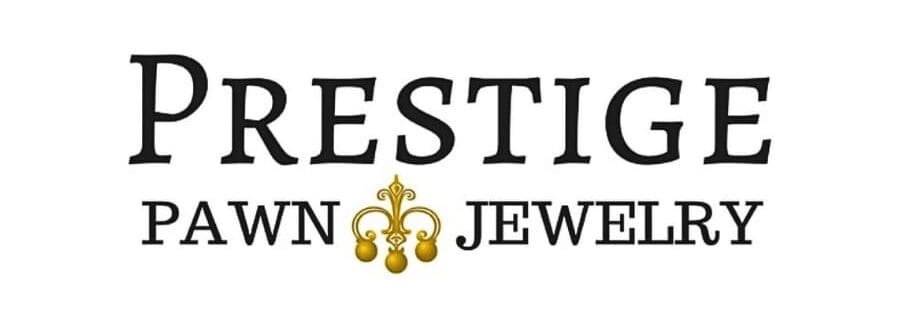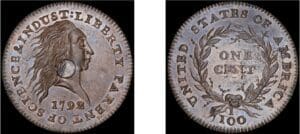What hidden treasures might be hiding in your grandparents’ attic or the local thrift store? Imagine stumbling upon a rare silver dollar, and not just any coin, but one of those rare coins sold for over $1 million. Now that’s quite a find!
Picture this: an old draped bust silver dollar nestled among forgotten trinkets. You grasp it, experiencing its heft in your grip. Its worn face tells tales of centuries past – the American public who initially minted it, passed it from hand to hand, admired its beauty.
In this article, we’ll travel through history and value and explore coins like these – once ordinary currency but now incredibly valuable collectibles due to their unique qualities. Unearth stories behind coins originally worth mere cents that today command millions at auction houses worldwide.
Are you prepared to take the plunge?
The Evolution of American Coinage
Did you know that the United States has been minting coins since 1792? Quite a bit earlier than your grandparents’ attic was even built. The journey from then to today’s currency is an intriguing tale, filled with transitions and transformations.
The Transition from Gold and Silver Coins
In the early days, gold and silver were staple materials in American coin production. But all that glittered soon turned not-so-gold. In 1933, by executive order (not as fancy as it sounds), gold got banned from coinage. Imagine waking up one day to find out you’re no longer allowed to use something so shiny.
A few decades later, by the early 1970s, silver followed suit – phased out like last season’s fashion trends. With these changes in material composition began a new era for our change jars.
Factors Influencing Coin Value
You might think this shift would devalue our beloved quarters and dimes but hang on just a minute there. Rarity plays an unexpected role here; much like finding an old baseball card or thrift store gem can suddenly turn into valuable treasure.
Beyond rarity though are other factors: backstory (every hero needs one), original production numbers (limited edition anyone?), current survival estimates… they all add weighty significance to any humble penny’s value.
Key Takeaway:
Did you know U.S. coins have been minted since 1974, transitioning from gold and silver to other materials? These changes didn’t devalue them but added intrigue. Rarity, backstory, production numbers and survival estimates all influence value.
Material Composition’s Role in Coin Value
The first element to consider when assessing a coin’s worth is its material composition. Coins made from precious metals like gold or silver inherently hold more value due to their base metal content. However, other trace elements can also contribute to a coin’s overall value.
Certain old pennies that might appear worthless could actually contain valuable metals such as copper – which was used extensively before cost-cutting measures were implemented by mints. Thus, knowing what your coin is made of can make quite the difference.
Beyond the actual materials used though, it’s how those materials are arranged that really sets apart high-value coins from regular ones. For example, certain mint errors—like off-center strikes or double-die obverses—can greatly increase a piece’s appeal among collectors.
Rarity and Backstory Influence on Price
A rare find isn’t just about low production numbers but also has much to do with surviving examples of said coins today (a.k.a estimated survival rates). Think of them as celebrities of the numismatic world; their fascinating backstories often play an integral role in skyrocketing their sales price too. This makes sense because people love stories – they add color and life into what would otherwise be cold hard cash (pun intended).
For instance, the tale of a coin surviving against all odds or coins that were part of significant historical events can pique collector interest. This often results in bidding wars at auctions and record sale prices.
How Production Numbers Affect Coin Value
The number of coins originally produced is another key factor to consider when assessing value. As you might guess, fewer coins minted equates to higher demand among collectors. The logic is simple: less supply + more demand = higher price.
Key Takeaway:
Don’t underestimate the worth of a coin. It’s not just about what it’s made from. Its rarity, history, original production numbers and survival estimates all play a part too. Even those pennies you might think are worthless could be quite valuable due to their metal content or mint errors. And remember this: coins with fascinating histories or limited initial productions can spark interest among collectors and drive-up prices.
The Story of the 1792 Silver Center Cent J-1
The history of the 1792 Silver Center Cent J-1 is like an action-packed movie. It’s a coin that really pushes boundaries, standing out like a superhero in the world of numismatics with its unique composition and history dating back to 1792. The Silver Center Cent J-1 truly takes material complexity to another level, composed of one-quarter cent worth of copper and three-quarter cent worth of silver.
Originally produced by the United States Mint, this special strike coin has unique qualities that add to its charm and worth. This cent was initially minted during a time when coins were undergoing considerable changes in their composition and design. Its inception marked a turning point for currency standards within America’s budding economy.
The High Sales Price of the Silver Center Cent J-1
Now let’s talk numbers. The sales price of this rare collectible skyrocketed to $2,520,000 at SD Bullion – making it one of those incredibly valuable coins you might only dream about finding tucked away in your junk drawer.
This high sale wasn’t just because someone had deep pockets though; there are solid reasons behind why this specific coin commands such an impressive figure. For starters, estimates suggest there are no more than 25 coins left today out of what was originally produced – talk about scarcity. And scarcity drives up demand which invariably affects prices on both ends: buying and selling.
In addition to rarity, another factor contributing significantly towards elevating its market value includes some interesting characteristics unique to it alone – namely being one of few known instances where silver was used inside copper creating ‘silver center.’ This method helped increase each cent’s intrinsic value closer towards actual face denomination while still keeping production costs low due inherently cheaper base metal utilized outside shell.
An example of the pricing and trading activity that these coins are subject to is provided here. With each passing day, these coin gems become more coveted by collectors worldwide who appreciate their historical significance as well as the American numismatic tradition they represent.
The current day worth of this coin, originally worth just a cent, serves as a fascinating lesson about value perception and rarity within the field of numismatics. But remember, finding one in your pocket change isn’t likely to happen unless you’ve been extraordinarily lucky or inherited it from someone with foresight (and perhaps some luck) many years ago.
Key Takeaway:
Uncovering an exceptional find isn’t common. This unique piece of American coinage history stands as a testament to innovation and rarity, making it a treasure for collectors around the globe.
Where to Find Rare Coins
Finding rare coins can feel like a treasure hunt. It may not be all about luck, but understanding where and what to search for is key.
Check Your Pocket Change
The first place you might stumble upon valuable coins is right in your pocket. Lincoln pennies or silver dollars could be worth more than their face value because of unique qualities that add value. Keep an eye out for irregularities such as misprints or errors during minting.
Digging through Junk Drawers and Attics
Your home may hide unexpected treasures too. Sift through old boxes in the attic or junk drawers – these forgotten spaces often hold discarded change that might include valuable rarities initially minted decades ago.
A good find here would be a draped bust silver dollar or perhaps even an extremely high relief double eagle coin which are both known to fetch high prices at auctions due to their rarity and historical significance.
Browsing Garage Sales
Another option is garage sales – sellers usually don’t know the true worth of items they’re selling so keep an eye open for loose change buckets, old piggy banks, foreign currency collections etc., any one of them could contain rare collectibles such as Liberty Head nickels or Flowing Hair Silver Dollars originally produced centuries ago.
Coin Shows & Auctions: A Collector’s Paradise
Coin shows and auctions are another place to get rare coins. You might come across the highly sought-after Brasher Doubloon or a Deep Cameo Capped Head coin. Although they may require more investment, their worth could appreciate significantly over time.
The Unexpected Find
Sometimes valuable coins can turn up in the most unexpected places like old furniture bought at an estate sale or inside vintage purses found at flea markets.
In all these pursuits, it’s crucial to do your homework. You need to dig deep and conduct research on how things work.
Key Takeaway:
Keep an eye out for these treasures. From your own pockets to thrift stores, you never know where you might stumble upon a valuable Lincoln penny or a draped bust silver dollar. Garage sales, coin shows, and auctions are also great spots to find collectibles like Liberty Head nickels or Brasher Doubloons. The thrill of the hunt is part of what makes coin collecting so rewarding.
FAQs in Relation to Rare Coins Sold for Over $1 Million
What coins are worth $1 million?
The 1794 Flowing Hair Dollar, the 1933 Double Eagle Gold Coin, and the 1913 Liberty Head Nickel have all fetched over $1 million at auctions.
Which quarter is worth $35,000?
A rare Wisconsin State Quarter error coin with an extra leaf on the cornstalk can fetch up to $35,000.
How do I know if my coins are worth anything?
You need to evaluate your coin’s condition, rarity, and demand. A professional appraisal will give you a precise value.
What coins are worth thousands of dollars?
Rare pennies like the Lincoln Penny from 1944 or unique dimes such as the Barber Dime from 1894-D could be valued in thousands.
Conclusion
Unearthing the secrets of coinage is a thrilling journey. Rare coins sold for over $1 million are no longer just currency, but historical artifacts with stories to tell.
The material composition, from gold and silver to today’s alloys, has shaped their worth. The rarest finds? Those like the 1792 Silver Center Cent J-1 – special strikes that offer glimpses into our past.
Yet these treasures aren’t confined to auction houses or collectors’ vaults. They’re hidden in thrift stores and grandparents’ attics waiting for discovery.
Remember this: Rarity isn’t simply about age – it’s also tied up with backstory, initial production numbers, and current survival estimates. Armed with knowledge and an eye for detail, you too can strike it rich in the world of rare coins!

